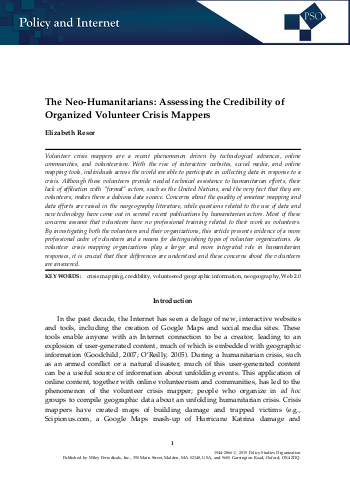
Volunteer crisis mappers are a recent phenomenon driven by technological advances, online communities, and volunteerism. With the rise of interactive websites, social media, and online mapping tools, individuals across the world are able to participate in collecting data in response to a crisis. Although these volunteers provide needed technical assistance to humanitarian efforts, their lack of affiliation with “formal” actors, such as the United Nations, and the very fact that they are volunteers, makes them a dubious data source. Concerns about the quality of amateur mapping and data efforts are raised in the neogeography literature, while questions related to the use of data and new technology have come out in several recent publications by humanitarian actors. Most of these concerns assume that volunteers have no professional training related to their work as volunteers. By investigating both the volunteers and their organizations, this article presents evidence of a more professional cadre of volunteers and a means for distinguishing types of volunteer organizations. As volunteer crisis mapping organizations play a larger and more integrated role in humanitarian responses, it is crucial that their differences are understood and these concerns about the volunteers are answered.